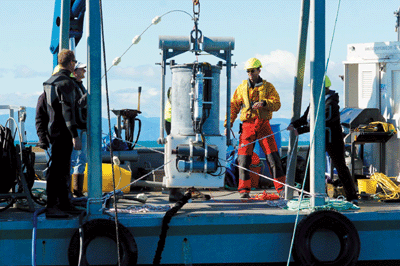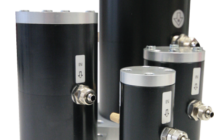New Zealand and American scientists have begun trialling a robotic analytical laboratory in Tasman Bay to monitor our marine environment.
The Environmental Sample Processor (ESP) or molecular lab in a can will provide site collection and analysis of water samples in the bay and communicate results back to the Cawthron Institute and the US based Monterey Bay Aquarium Research Institute (MBARI).
The ESP has previously been deployed at depths of 1,600 metres below sea level in coastal waters around the United States as part of a NASA sponsored project in part to model the search for life on other planets.
But this will be the first time the technology has been deployed in the Southern Hemisphere.
Cawthron scientist Dr Chris Cornelisen says the processor will detect micro-organisms ranging from human faecal bacteria, to invertebrate larvae, to bloom-forming phytoplankton, and for the test period will be remotely operated from Monterey Bay, California.
“This is very cutting edge stuff and could completely change the face of monitoring by providing near immediate information on water quality, biosecurity threats and potential toxic blooms.”
Aside from increasing the value of Cawthron’s contribution to New Zealand’s understanding of land-sea impacts, the ESP could also have huge significance in terms of New Zealand’s world leading Seafood Safety programme, of which Cawthron has been a key research contributor.
Helen Smale, manager, Marlborough shellfish quality programme, sees the technology as the next big leap in monitoring and managing our marine environment.
“It could allow for better planning and a quicker and targeted response to changing environmental conditions. For a marine farmer to know in near-real time, for example, when a harmful bloom is occurring will have incredible benefits for the aquaculture industry, New Zealand exports and for consumers.”
MBARI and Centre for Ocean Solutions scientist Dr Kevan Yamahara says the ‘lab in a can’ was developed to reduce time and costs associated with ocean monitoring and to provide critical data on water quality in a timely manner.
“ESP allows researchers to conduct molecular biological analyses remotely, in near-real time over a sustained period, and with interactive capability. Tasman Bay, with its important wildlife areas, fish habitat, marine farming and recreational uses, is a great location to refine the technology even further.”
Dr Chris Cornelisen says Cawthron’s research experience in this field has been key to building on MBARI’s already tested systems to make the technology fit for purpose in New Zealand’s marine environment.
“This is what these important international collaborations are all about, utilising each other’s unique capabilities to create a partnership that ensures New Zealand stays at the forefront of monitoring technology.”
The ESP will be deployed alongside the TASCAM system that Cawthron and MBARI scientists put in Tasman Bay in April 2011. The TASCAM measures weather conditions, currents, temperature, salinity and turbidity in the surrounding environment and transmits that information to shore.
As the first long-term, real-time monitoring system in New Zealand coastal waters, the TASCAM has allowed Cawthron scientists to capture and distribute data openly online.
Cawthron research scientist Kirsty Smith says: “The addition of the ESP will further build on our understanding of Tasman Bay and could eventually provide fishers, boaties, marine farmers and others with additional information they need for decision making – when they need it.”
After the planned 30 day deployment, Cawthron and MBARI scientists will analyse the data gathered and evaluate the future operation of Environmental Sample Processors in New Zealand waters.
The ESP was developed in the US using funding from the National Science Foundation, the NASA Astrobiology Program, the Gordon and Betty Moore Foundation, the Keck Foundation, the National Ocean Partnership Program, the Centre for Microbial Ecology, and the David and Lucile Packard Foundation.
For more information, Visit:
www.cawthron.org.nz





























































































